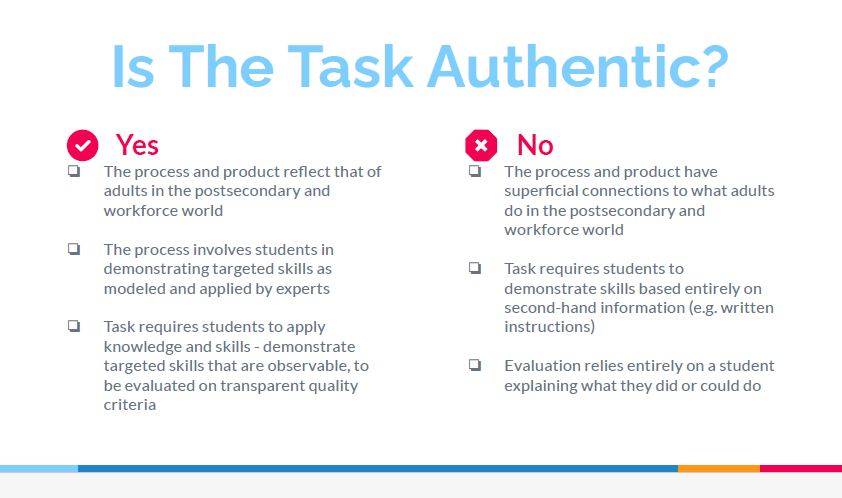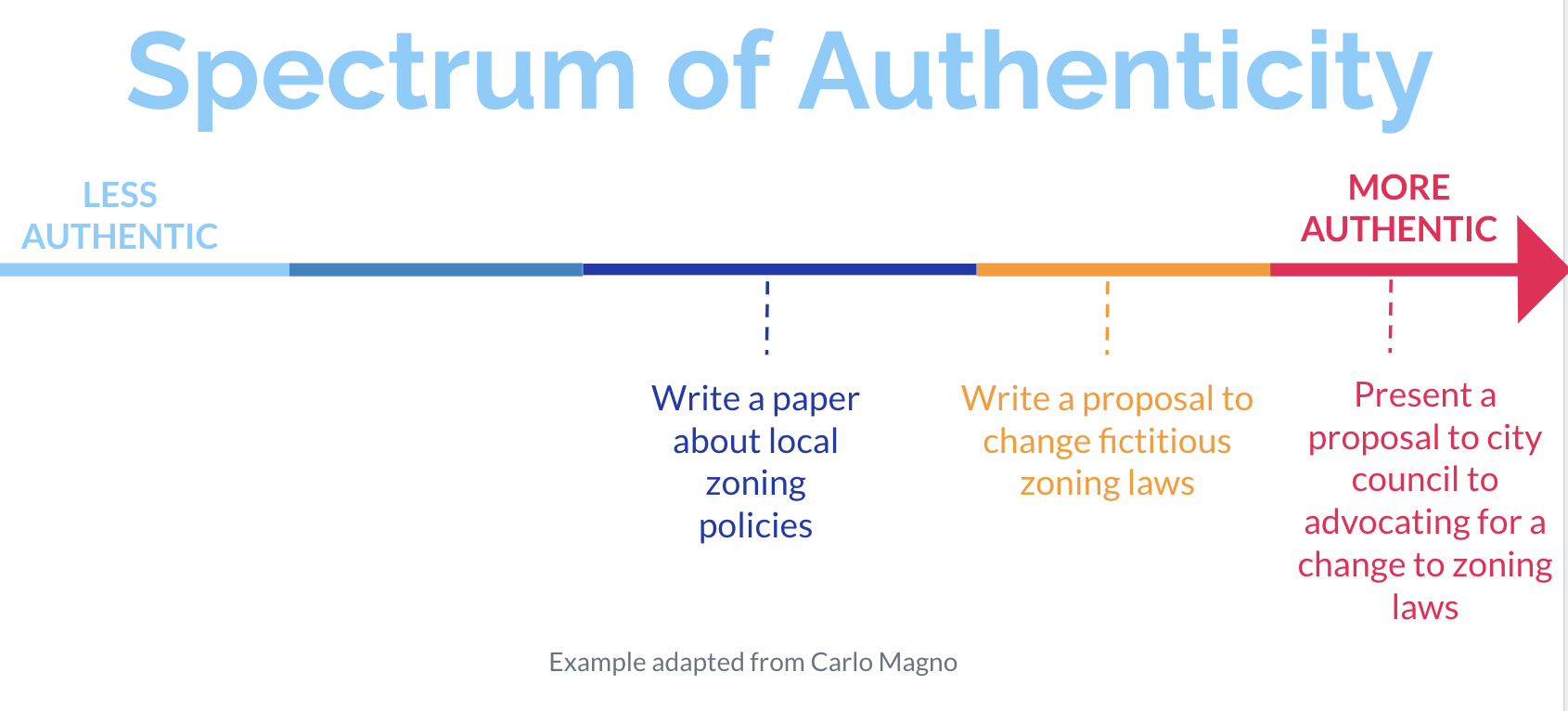
Often we make a distinction between "school" and "the real world". In school, students fill out worksheets and work on problems with single correct answers. In contrast, the real world is messy, unpredictable, and there aren't single solutions. Often success in the real world requires collaboration, adaptation, and persistence. These false barriers we put up between school and the real world beg the question: how are students going to be prepared for the real world if we don't provide them with opportunities to engage in authentic challenges?
That's one reason authenticity is a key element in Colorado's definition of a high quality performance assessment. As you engage in the Validation process in Module 5 and get feedback on your performance assessment design, your reviewers will be asked about the assessment's authenticity. In considering whether the task is sufficiently authentic, they'll consider the following questions from our alignment tool.

However, authenticity isn't simply a binary proposition. Instead, it's more like a continuum. Here's one way to visualize a spectrum of authenticity:
